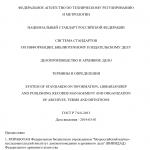Matrix exposure metering. Metering modes. Spot and partial modes
In this lesson we learned that the camera is equipped with a very precise tool for measuring the brightness of a scene. To always get high-quality photos, you need to learn how to work with it.
The camera can meter exposure in different modes to suit different shooting situations.
Matrix exposure metering


The most suitable exposure metering mode for beginner photographers is matrix. It is also called evaluative or multi-segment. The brightness of the scene is measured over the entire area of the frame, using the maximum number of sensors. The results from each sensor (remember that depending on the model of the device, their number can reach tens of thousands) are analyzed, and the camera determines the optimal exposure value. Methods for analyzing this data are constantly being improved and become more intelligent. The number of exposure metering sensors is also growing. All this makes matrix metering more accurate with each subsequent generation of cameras.
Today, with matrix metering, it is almost always possible to obtain the correct exposure. Minor difficulties may arise in non-standard situations for automation. For example, shooting a person indoors against a window. In this case, the automation cannot accurately determine what we are filming: a landscape outside the window illuminated by the midday sun or a person dimly illuminated by room light. It can solve this problem in different ways depending on the situation and the specific layout of the frame. Shooting on a white or black background can also cause difficulties: the automation will try to equate the prevailing shades in the frame to gray. Therefore, frames on a white background will turn out too dark, and on a black background - too bright. Shooting test frames and then applying exposure compensation or using other metering modes (for example, spot) will help solve this problem.

When to use matrix metering? This mode is suitable for most shooting situations. It will be optimal for active reportage shooting, photo walks, amateur family photo sessions and travel.
Spot metering



Quite difficult to use, but the most accurate exposure metering mode is spot. The brightness of the photographed scene is measured over a small area, a point. IN Nikon cameras this point will be located in the same place as the active autofocus area. Since the measurement occurs only in a very small fragment of the image, you need to choose the area for measurement wisely. If you thoughtlessly poke this point into any place you come across, the result will most likely not be the most successful. We will get an incorrectly exposed frame. Spot metering should be done relative to the average brightness areas in the image. After all, the camera believes that we are “showing” it an object of average brightness and, based on this, measures the exposure.
For example, when photographing this house, you should measure the exposure not against its white wall (otherwise the picture will turn out too dark) and not against the dark forest (we will get an overexposed frame). It is better to use medium-brightness fragments of the plot. The ideal option would be a slate roof for the house.



Some people use spot metering in portrait photography. This is convenient if you are shooting on Nikon camera and the metering point is in the same place as the focusing point. Since people's faces tend to be average in brightness, face spot metering will generally work correctly. But if we are photographing a dark-skinned or black person, it is worth considering making a slight negative exposure compensation.

Exposure lock. Often, after measuring exposure using spot metering, the shot needs to be recomposed. To prevent the exposure from being lost after recomposing (after all, the device constantly measures exposure until we take a picture), there is a special exposure lock button - AE-L (Automatic Exposure Lock). When you click on it, the camera fixes the current value of the exposure parameters. This feature is useful not only when working with spot metering, but also when you need to take several shots with the same exposure without switching to manual mode. This is often necessary when shooting panoramas.


By the way, when you hold the shutter button half-pressed, exposure metering is also locked. After you press the button all the way and the frame is taken, exposure metering will continue, which is not always convenient (for example, when shooting panoramas).
When to use spot metering? First of all, when you are confident that you can handle it. After all, for accurate measurements you will have to carefully monitor which object in the frame the exposure is measured on. Photographers often use this type of metering when shooting landscapes with complex (sunset, dawn) contrast lighting. This type of metering can also be used in portrait photography, measuring the exposure exactly according to the model’s face.
Center-weighted metering


Center-weighted metering type is a classic type of exposure metering, inherited from modern devices from the very first film cameras. SLR cameras having a built-in exposure meter. Exposure metering in this mode is carried out over a large area in the center of the frame, in a circle of large diameter. In this case, the area located directly in the very center of the frame has higher priority (greater “weight”) when analyzing the received data. Today, this type of metering is a little outdated against the background of, firstly, intelligent and easy-to-use matrix metering and, secondly, accurate and flexible spot metering.
Light meter- device for instrumental measurement photographic exposure and determining the correct exposure parameters.
Exposure Metering Mode- in modern photographic and film equipment determines the method of evaluation brightness different parts of the frame during instrumental measurement exposition , mainly using the light meter built into the camera.
Various metering modes have appeared with the development TTL exposure meters , since they are practically impossible to implement with their other types. Moreover, modern digital and film cameras have the ability to measure in various modes of both constant light and light photo flashes , measured, as a rule, by the same sensors as continuous lighting.



Average metering
With average measurement The brightness of all parts of the frame is taken into account equally. Both external exposure meters and most built-in ones have this measurement method.
The first TTL exposure meters only had a measurement mode that was suitable for low-contrast scenes, but produced errors if there was a large difference in the brightness of the subject and the background.
Center-weighted exposure metering In this mode The sensitivity of the sensor is distributed unevenly across the entire field of the frame, reaching its maximum value in the center, where the main subject is usually located. central part , limited by a circle with a diameter of 12 millimeters, occupied 60% of the total measurement result. The remaining portions of the frame were 40%, allowing for more accurate measurements of most scenes. Unlike the spot mode, which reacts sensitively to the slightest changes in the position of the metering area and requires constant attention, center-weighted metering is more average and suitable for reportage shooting.
Spot metering
Spot metering measures brightness small area frame, ranging in size from 1 to 5% of its total area. Usually the “point” is located in the center of the frame, although many cameras allow you to set it in other places. Spot metering allows you to correctly determine the exposure of contrasting scenes without getting close to the subject.
For example, when shooting a brightly lit subject against a very dark background (for example, an actor on a dark stage), using spot metering on an important part of the scene allows you to expose the subject correctly, ignoring the overall dark tonality. And although the background will be underexposed, the desired subject will receive the correct exposure.
Partial mode
Partial metering is a type of spot, covering a wider “spot” of 10-15% of the total frame area. Unlike center-weighted, which takes into account the brightness of the entire frame in different proportions, partial measures only a limited area, like spot.
Matrix (evaluative, multi-zone) exposure metering
Evaluative or matrix metering is based on dividing the frame into several segments, the exposure of which is measured independently, and the resulting results are processed by the camera's microprocessor, determining the optimal exposure based on statistical data.
 Correct exposure versus camera exposure
Correct exposure versus camera exposure
Exposure is a complex beast. And conquering it is very, very important. Exposure and composition are the two most important components great photography.
The exhibition consists of three components:
- or sensitivity to light;
- Aperture, or the size of the opening through which light enters;
- Shutter speed or the time it takes for light to pass through.
Measuring the light or brightness of the scene you are trying to capture is a critical component in determining the ideal exposure. To do this, you need a sensor that can sense brightness levels.
Exposure is measured using a light meter. There are two types of light meters: the first measures the light falling on an object or scene and is called a luminance light meter; the second measures the light reflected from a scene or selected object, which is why it is called an illuminance meter. All exposure meters built into digital cameras, are exposure meters that measure illumination, and in this article we will talk about them. The more you understand how these light meters work, the better you will be able to understand and interpret the data they give you. Note that light meters that measure by brightness are much more accurate than light meters that measure by illuminance.
How does your camera determine exposure?
Light meters attempt to estimate the amount of light in the scene you are trying to capture. Unfortunately, this estimate is just a guess. You've most likely encountered instances where you tried to photograph a very dark or black subject and it came out overexposed, or it was a snowy scene where the snow looked gray or underexposed. The reason is that the camera's light meter is convinced that most scenes are reduced to medium gray (18% gray). This medium gray is the middle ground between the darkest shadows and the brightest highlights. Since the sensor in a camera has no concept of white or black, you must help it by using some form of exposure compensation based on the color scheme of the subject or scene.Exposure Metering Modes
To work with exposure and determine the degree of exposure compensation, cameras have exposure measurement modes. Typically you'll encounter three main modes: Matrix (also called Evaluative), Center-Weighted, and Spot mode s. Each of them is suitable for certain situations. And don’t be mistaken that one of the named modes will do everything for you.Evaluative exposure metering
 In this exposure metering mode, the sensor divides the scene into segments and analyzes each of them for the ratio of light and shadow (bright and dark information). Once the information is collected, it calculates the average and sets the exposure based on that. Please note that different cameras may divide the frame into different numbers of segments. In addition, different cameras calculate the average value for exposure differently. Manufacturers use complex formulas to calculate exposure. Therefore, it is important that you know how your camera behaves in different situations, and learned to understand when to trust him and when not to.
In this exposure metering mode, the sensor divides the scene into segments and analyzes each of them for the ratio of light and shadow (bright and dark information). Once the information is collected, it calculates the average and sets the exposure based on that. Please note that different cameras may divide the frame into different numbers of segments. In addition, different cameras calculate the average value for exposure differently. Manufacturers use complex formulas to calculate exposure. Therefore, it is important that you know how your camera behaves in different situations, and learned to understand when to trust him and when not to. Many modern digital SLR cameras not only average the values obtained in the grid segments, but also additionally pay attention to Special attention focal points that are used to create a particular photograph.
The matrix exposure metering mode was used to set the exposure for the next series of photographs. Under the same lighting, white and black panels were placed next to each other.
When taking the first photo, the camera set the exposure while pointing between the white and black panels. The camera assessed all the white and all the black and came to a logical decision by averaging the exposure.
 Evaluative exposure metering - center between white and black panels
Evaluative exposure metering - center between white and black panels
 Measurement on a white panel
Measurement on a white panel
This photo was taken with the camera's sensor judging the exposure using a white panel. The white turned out to be gray, and the black turned out to be a darker gray. This happened because the camera tries to make everything neutral gray or 18%.
 Metering on a black panel
Metering on a black panel
In the third photo, the camera assessed the exposure based on the black panel. As a result, the photo was overexposed: the white was too bright, and instead of black it turned out to be dark gray.
 IN this method measurement, the central part of the frame is most important, which can make up up to 75% or even more of the entire frame, while the edges of the photo are considered a less important part of it. Many professional digital SLR cameras allow you to change the diameter of this center-lighting zone.
IN this method measurement, the central part of the frame is most important, which can make up up to 75% or even more of the entire frame, while the edges of the photo are considered a less important part of it. Many professional digital SLR cameras allow you to change the diameter of this center-lighting zone.
Many photographers prefer this mode of exposure measurement, while obtaining quite good exposure accuracy. Please note that when using center-weighted exposure metering, in most cases you need to place the subject in the center of the frame, determine the exposure, and only then choose the desired composition for the photo.
Spot metering
 In this mode, light is measured only within a very small part of the scene. Typically this area is in the center of the photo and the measurement range is approximately 3 to 7 degrees. Typically, the measurement area takes up less than 5% of the frame. Most digital SLR cameras mid- and high-level allow the photographer to move the metering point within the frame to determine the location from which data should be collected (usually the same as the focus point).
In this mode, light is measured only within a very small part of the scene. Typically this area is in the center of the photo and the measurement range is approximately 3 to 7 degrees. Typically, the measurement area takes up less than 5% of the frame. Most digital SLR cameras mid- and high-level allow the photographer to move the metering point within the frame to determine the location from which data should be collected (usually the same as the focus point). This is a very accurate exposure metering mode. It provides accurate data from a small area of the selected scene and is most effective when shooting scenes with high contrast.
The same white and black panels were photographed using spot metering. As you can see in the photo below, there is a similar problem. Even the point mode was fooled.
 Spot metering on black (photo on the left) and spot metering on white (photo on the left)
Spot metering on black (photo on the left) and spot metering on white (photo on the left)
To determine the correct exposure (and the camera was not fooled), spot metering was done using a gray card placed in the same light as the black and white panels. The exposure determined using the gray card was used to photograph the two panels. In the photo below we can see a good exposure.
 Exposure determined by gray card
Exposure determined by gray card
How do I switch between exposure metering modes?
The exposure metering mode icon looks like an eye in a rectangle. Your camera's exposure metering system may have three or more modes of operation. When changing the measurement mode, the icon will also change.Which exposure metering mode should I use and when?
Matrix exposure metering
Matrix metering works well for scenes that are evenly lit. It can work well if you need to take photos quickly. While your camera's light meter may fail you at times, it is a sophisticated computer-controlled device that can be relied upon for general photography. You can set this mode on your camera and use it to improve your understanding of exposure.The first TTL exposure meters only had a measurement mode that was suitable for low-contrast scenes, but produced errors if there was a large difference in the brightness of the subject and the background.
Use this mode for any scene where you want the main subject to be properly exposed, while other areas of the photo are not as critically exposed. This mode is great for taking portraits of people and pets, still lifes, and some types of product photography.Center-weighted mode is much more consistent and predictable than matrix mode. Use it thoughtfully when determining where your camera will measure light in a scene, while also paying attention to areas where lighting is not key to your composition.
Use this mode, for example, for street portraits, scenes with high contrast, photography of goods and food.
Spot metering
Spot mode provides the greatest metering accuracy and exposure control. It's great for backlit subjects, close-up photography, and macro photography. This mode can be used to determine the exposure for the brightest and darkest areas of the landscape. Without this mode it is impossible to photograph the moon. Don't forget about spot metering when it's important to determine the correct exposure for a subject that doesn't take up the entire frame.Spot metering is great in situations where the subject is much lighter or much darker than its surroundings.
Exposure compensation
In some situations, you will need exposure compensation to get the correct exposure, no matter which exposure metering mode you use. Scenes with a lot of snow will appear underexposed and will require +1 stops or more adjustment to make the snow appear white.Conversely, a black shaggy bear or a person in dark clothing will be overexposed, so a negative correction of -1 stops or more will be required.
So which mode should you use?
The answer is that it all depends on the subject, the direction of the light, and so on. For evenly lit scenes, choose matrix mode. Center-weighted mode is suitable for scenes with high contrast where you want the exposure to be correct for the main subject. Spot mode is good for shooting backlit subjects.Finally, a brightness meter can be useful to accurately measure exposure, as your camera's sensor can be fooled quite easily. But knowing how the light meter in your camera works will definitely help you get the correct, more accurate exposure.
No matter how you photograph or what shooting mode you prefer to use, there is one element that remains the same - exposure metering. Either way, you or your camera need to know how much light is in the scene in order to determine the optimal combination of aperture size, shutter speed and ISO to get the photo you want. This tool, which may seem unimportant to new photographers, is called exposure metering.
Understanding how it works is critical to improving your skills and helping you get the shots you want. I hope this article will help you figure it out.
An analogy to help you understand exposure metering
Before I talk about how exposure metering works, think about the last time you grilled meat. Whether it was a steak, pork chops, or even a couple of hamburgers, you probably had an idea of what the finished product would look like.
Backyard cooks like me who aren't very good at it use a thermometer to make sure the food is cooked properly. But the question arises where to stick the thermometer to check whether the meat is cooked. Or, in the language of photography, check whether it is correct exposed meat. You can only touch the surface, pierce to the middle, or insert the thermometer in different places to get the overall picture.
Each method will work differently, but it all depends on what you're cooking and how you want the dish to turn out in the end.

Metering your camera's exposure is similar to measuring the temperature of meat with a thermometer. Placement is critical to getting the right metrics.
How exposure metering works
When you point the camera at a scene, you need a way to measure the incoming light so you know how much there is and what settings you need to make to get the image you want. It's like measuring the temperature of food with a thermometer to make sure it's cooked properly.
Most modern cameras use a process called TTL light metering behind the lens. This means your camera checks the light passing through the lens and evaluates the brightness of the scene. You or your camera can then make the settings necessary to properly expose the image. You may not even notice how exposure metering works unless you shoot in manual mode. But believe me, he is constantly controlling the light, whether you know it or not.
Overview of the metering scale in Manual mode
To see how exposure metering does its job, put your camera in manual mode and look for a series of dots or vertical lines at the bottom of your camera's viewfinder.

In Manual mode, look at the bottom of the viewfinder screen. Find a scale with a zero in the middle. This is exposure metering at work.
The number scale at the bottom of the image above is an example of exposure metering, and the tiny little triangle shows whether the image is properly exposed or not. In this case, the triangle is 0, which means the image is exposed correctly, but changing the aperture, shutter speed, or ISO will cause the triangle to move up or down the line respectively and result in an image that is too light or too dark.

What part of the scene does the camera meter the exposure from?
While this is all well and good, it only tells part of the story because it doesn't explain how your exposure metering works. Does he see all the incoming light or only part of it? How much of the frame does he see? Understanding the answers to these questions is key to unlocking the power of this tool, and it all comes down to something called metering modes.

Metering Sveta
Most cameras today have a few basic ways of measuring incoming light:
- Matrix or Evaluative Metering– the camera sees the light in the entire scene and averages it out (Nikon puts more emphasis on the area where your lens focuses). Nikon has Matrix metering, Canon has Evaluative metering.
- Center-weighted metering– sees the light of the entire scene and averages it, but with an emphasis on the center of the frame. Both Nikon and Canon have this mode called Center-weighted.
- Partial metering– measures light only in a small part in the center of the frame (about 8-12% of the entire scene). This is the metering mode in Canon, Nikon does not have this.
- Spot metering– measures light only in a small area around the central AF point (about 1.5-3% of the frame). For Nikon and Canon this mode is called Spot.
Other camera manufacturers have different names for these modes, but understanding how your camera measures incoming light can have a huge impact on whether your photo is properly exposed. As an example, here are three photographs taken with different exposure metering modes.

Image #1 taken with Matrix (Nikon) or Estimated (Canon) exposure metering.

Image #2 taken with Center Weighted Metering.

Image #3 taken with Spot Metering.
Measuring reflected light against incident light
There is another aspect of light measurement that comes into play when taking a photo. It's about how the TTL system works compared to a handheld light meter.
Reflected light metering
The first (the type of measurement used in DSLRs) works by measuring the amount of light passing through the lens. But the problem is that unless you point your camera directly at the light source, the light being measured actually bounces off your subject.
All the colors we see in the world around us acquire their shades and tonal values by absorbing every color of light except the one that is reflected from them. As we learned while studying at primary school, light is made up of a spectrum of colors including red, orange, yellow, green, blue, indigo and violet. A green tree leaf absorbs every color of light except green. A red car absorbs every color except red, and so on.

When your camera measures incoming light, it looks at the amount of light that bounces off your subject, not the amount of light that hits your subject. This is essential and can significantly impact your exposure. In the illustration above, the child is wearing clothing that absorbs most colors of light except blue, which means that a lot more light bounces off of him and is sent into the camera. However, if you change your clothes, a lot will change.

In the illustration above, although the amount of light hitting the boy has not changed, the camera will read the scene differently because he is now wearing a dark shirt and pants. The camera will think it needs to change the exposure to compensate for what it thinks is less light in the scene, and the result will be an overexposed image.
Here real example how it works:

Nikon D7100, 200 mm,f/2.8, 1/8000.
In the photo above, so much light was reflected off the girl's white T-shirt that my camera had a hard time measuring the scene properly. Most of the sunlight was bouncing off the t-shirt and straight back into my camera, so it responded with a very fast shutter speed and low ISO to make sure the t-shirt was properly exposed. Unfortunately, the rest of the scene was underexposed.

Nikon D7100, 200mm, f/2.8, 1/1500.
And this is what happened a few seconds later in the same place after the girl changed her T-shirt to a brown one. Since most of the light from the sun was absorbed by the dark color of her outfit, my camera created a much brighter exposure using a slower shutter speed. The TTL metering system didn't receive as much light, so the camera decided it needed more light to get a good exposure.
Incident light metering
This phenomenon can be especially frustrating if you're photographing a wedding; Grooms often wear dark suits, while brides usually wear dazzling white dresses, which can really confuse your camera's TTL metering system. The solution is to use an external handheld light meter, such as the Sekonic L-308S-U, which actually measures the amount of light falling on the subject.

A handheld light meter for measuring incident light (light falling on an object).
In the image above, you can see that the light meter shows the f/16 aperture, 1/125 shutter speed, and ISO 100 settings you need to get a properly exposed scene. These values will likely be different from what the TTL system will give you because some amount of light will invariably be absorbed by the subject, which is why an external light meter can be much more useful.
This is what the previous circuit would have looked like if an external light meter had been used.

You'll often see wedding photographers use a tool like this to get a more accurate idea of how much light is present in a scene when taking formal wedding photos. This is especially true if external flashes are used because they need to know how much additional light the scene will require or allow.
Often at weddings, the bride is dressed in a snow-white dress, which reflects a lot of light, and the groom is dressed in a dark suit, which absorbs the light. This can wreak havoc on a TTL metering system, and an external light meter is a great way to solve the problem.

Conclusion
The overall goal here is to understand how exposure metering works in your camera. This in turn will help you know how you will need to change your exposure settings to get the shot you want.
I hope this article was helpful in explaining how exposure metering works, how light bounces off your subjects, and why your camera may not be seeing a given scene the way you expect. Ultimately, it's important to remember that there is no one correct way to measure the amount of light in a scene. Any of the metering modes and methods will work as long as you know what you're shooting and what results you're trying to achieve.
Knowing the difference between different metering modes and types and understanding how light is measured as it enters your camera can help you get the shots you want. None of these methods is better or worse than the other, but each has its own strengths and weak sides. The more you know about how it all works, the more likely you are to get the photos you want.

Even if you were embarrassed to ask the seller about exposure metering modes when buying a camera and are afraid to get bogged down in technical details while mastering the camera manual, ignore for a long time this question you won’t succeed, because without mastering such valuable information, not a single photographer has ever managed to take high-quality photographs on a DSLR. To do this, it is worth understanding the different types of exposure metering. But, first of all, let's look at what is it needed for?
Exposure in photography is determined by the amount of light that hits the camera's sensor or film. This amount can be adjusted by changing the ratio of aperture and shutter speed. The ratio is determined by the exposure meter built into the camera. But to help the exposure meter itself correctly estimate the amount of light is the photographer’s task. After all, the camera is an extension of the photographer’s brain, and not vice versa. She doesn’t know how to read thoughts, she needs to clearly set the settings that are required to get a high-quality photo.
The main function of a light meter is to measure the amount of light entering the camera. More specifically: it measures the light reflected from various objects in the scene being photographed. But how to determine the correct exposure if several different objects enter the lens, which, by definition, will reflect light differently? It all depends on the dynamic range of the camera and metering modes.
Each of the camera's metering modes (of which there are usually four) will process the scene differently, and it is up to the photographer to decide which mode is best in each case:
- evaluation measurement
- partial metering
- spot metering
- center-weighted average metering
Please note that we are talking about digital SLR cameras from two of the most popular manufacturers - Canon and Nikon. Other manufacturers have very similar metering modes, available features, and naturally deliver the same results.
Evaluative (matrix) metering mode

Evaluative metering (Canon) or matrix metering (Nikon) divides the entire photographic scene into small areas. All measurements are then calculated and averaged to determine the optimal exposure (shutter speed and aperture combination). As you can see from the photo, the red square shows the area that will be assessed by the sensor. Given the "advanced" capabilities of modern SLR cameras, not only the amount of light is measured, but also things like the distribution of shades, colors and even distance.
As a rule, evaluative metering is the default setting in most settings. digital cameras and gives good correct exposure. Evaluative metering is suitable for most standard situations, such as landscape photography.
Center-weighted metering mode

Center-weighted metering also attempts to measure the entire scene on average, with the only difference being that more weight is given to the area in the center of the viewfinder. In the photo, more significant places are indicated by the intensity of the red color. About 70% of the counting is made up of the area around the center of the viewfinder. This exposure metering mode involves increasing intensity towards the center.
Partial metering mode

As you can tell from the photo above, partial metering covers about 9% of the viewfinder and will be most effective when it's much brighter than the subject. Particularly due to its emphasis on the center of the viewfinder, this metering mode is most effective when the edges of the scene are significantly lighter or darker than the center, meaning the edges may have an undue effect on the exposure of the frame. But the disadvantage of this mode is precisely its emphasis on the center of the viewfinder.
Spot metering

Spot metering mode gives you better control over where to take light metering data for exposure, since it only covers about 4% of the area entering the viewfinder. This is the smallest area of all metering modes. The main advantage of spot metering comes from the fact that the location for metering exposure can be selected using the focus points and thus make a more accurate metering exactly where needed. Spot metering is what you need for portrait photos because it measures the light reflected from the face over a range of about 1 meter.
When to use each metering mode?
So which metering mode should you use and when? It should be said that most often they use evaluative (matrix) or spot measurements. The other two types of measurement are used less frequently. Ultimately, it comes down to personal preference. You can choose one or two and use only them. The only thing you need to know for sure is how the camera will measure exposure in this mode in order to then make adjustments through compensation or bracketing. Having started with a clear mastery of the evaluative exposure metering mode, you can move on to subsequent ones and get to know your camera and its capabilities better.





